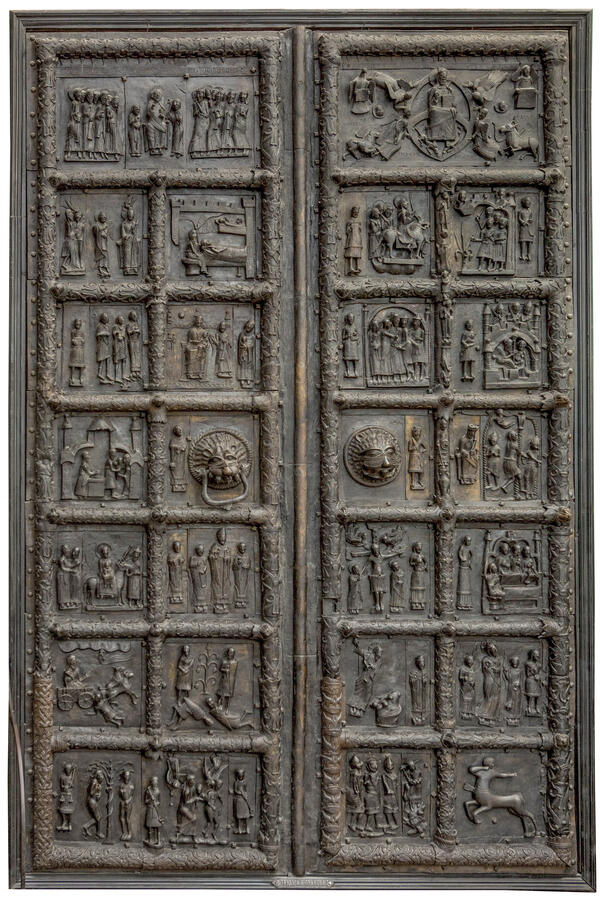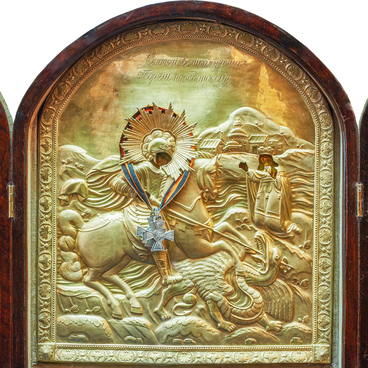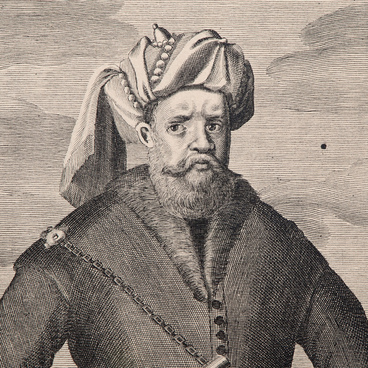The State Historical Museum houses a copy of the Sigtuna Gates from the Novgorod St. Sophia Cathedral. It was made specifically for the exhibition. The original gates are located in the cathedral in Veliky Novgorod, but they are opened only during great church holidays.
Metal doors with a relief pattern were made by masters from Magdeburg, a large trading city in Germany. According to one version, they were cast to commemorate the coronation of the German monarch Frederick I Barbarossa, which took place in Magdeburg in 1152. But the gates were installed in Poland, in one of the churches in the city of Płock.
It has not been established how the gates ended up in Veliky Novgorod. One legend says that the Novgorodians brought them from Sweden. According to this version, they looted the ancient Swedish capital of Sigtuna around 1187 and later handed them over as a trophy to the Novgorod Sophia, hence the name — the Sigtuna gates.
In Novgorod, the doors were restored by a Russian sculptor and caster Avram. He made some of the missing parts himself and probably borrowed some from another similar artifact, which slightly differed in style. Avram placed his own image next to the figures of German masters. He also complimented each scene with an inscription in Russian: initially, Latin texts were carved next to them. Around 1450, the gates were installed in the western part of the Saint Sophia Cathedral.
Two wooden doors are decorated with cast plates. There are 48 multi-figure compositions on them — scenes depicting events from the Old and New Testaments, as well as images of patrons and craftsmen who worked on the gates. In the lower corner of the right door, one can see a figure of a centaur: at that time, the centaur symbolized the duality of human nature, a combination of the earthly and the divine. In Russian legends, this mythical character was called Kitovras. A rarely depicted biblical story is also featured on the gates — the creation of Eve from Adam’s rib.
According to a medieval European tradition, the door handles were made in the form of animal faces. Human heads are depicted inside their mouths — these could be allegorical images of sinners who will be punished during the Last Judgment.
Metal doors with a relief pattern were made by masters from Magdeburg, a large trading city in Germany. According to one version, they were cast to commemorate the coronation of the German monarch Frederick I Barbarossa, which took place in Magdeburg in 1152. But the gates were installed in Poland, in one of the churches in the city of Płock.
It has not been established how the gates ended up in Veliky Novgorod. One legend says that the Novgorodians brought them from Sweden. According to this version, they looted the ancient Swedish capital of Sigtuna around 1187 and later handed them over as a trophy to the Novgorod Sophia, hence the name — the Sigtuna gates.
In Novgorod, the doors were restored by a Russian sculptor and caster Avram. He made some of the missing parts himself and probably borrowed some from another similar artifact, which slightly differed in style. Avram placed his own image next to the figures of German masters. He also complimented each scene with an inscription in Russian: initially, Latin texts were carved next to them. Around 1450, the gates were installed in the western part of the Saint Sophia Cathedral.
Two wooden doors are decorated with cast plates. There are 48 multi-figure compositions on them — scenes depicting events from the Old and New Testaments, as well as images of patrons and craftsmen who worked on the gates. In the lower corner of the right door, one can see a figure of a centaur: at that time, the centaur symbolized the duality of human nature, a combination of the earthly and the divine. In Russian legends, this mythical character was called Kitovras. A rarely depicted biblical story is also featured on the gates — the creation of Eve from Adam’s rib.
According to a medieval European tradition, the door handles were made in the form of animal faces. Human heads are depicted inside their mouths — these could be allegorical images of sinners who will be punished during the Last Judgment.



